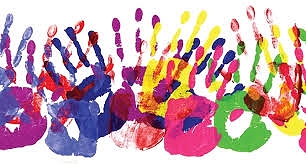
A key problem with using these mottos is that they are based on assumptions and within a customer service context such assumptions might very well cause frustration for the customer.
A more effective approach is to treat customers the way they want to be treated. To do something of value for your customer in a way that balances how customers want it done with how best you can do it.
To do this takes a willingness to listen, show some empathy and perhaps engage in a wee bit of creativity to add value as is appropriate and relevant. Sometimes this value might not necessarily goods or dollars but it might be as simple as a helping hand that directs the customer to a more appropriate business / resource.
Such a seemingly small and simple gesture can sometimes go a long way to building value for your business … if for no other reason than you just never know who you are helping. For example, Nelson Mandela was once unknown, the Rolling Stones were once unknown (around the time that Richard Branson was also relatively unknown) and Jeff Bezos was also an unknown.
An example of the importance of listening to your customer and how they want to be treated was discussed in the Harvard Business Review (July-August 2014) and involved the fashion business Eileen Fisher. This business came to realise that the high-touch approach that worked well with their 50-something customers did not go so well for their 40-something customers who preferred a more transactional and distant type relationship.
Just just known for fashion adn their ethical pracitcies but also a wiz at always seeking to better know their customer.
This highlights that even the one business will experience different connections and relationships with their various customers – for example, some will enjoy an intimate relationship, some might just like flirting, whilst others might just be interested in keeping it online.
Another example is the famous motorcycle, fashion and accessories company Harley-Davidson. This iconic company has a team of employees who spend an average of 280 days a year on the road with customers but not to sell Harley’s but rather just to listen and develop intimacy. What a kewl job … although I’d prefer a Ducati of Guzzi.
The iconic Harley-Davidson company has a team of employees whose job it is to be on the road with their customers … so as to get to know them better.
An empowered service culture is one that listens to customers and treats them the way they want to be treated. And if customers are to be treated with respect and with a quality of service that inspires … then the same investment needs to be made for the experiences delivered to internal customer experiences. Do this and opportunities follow.
